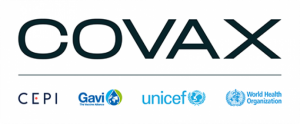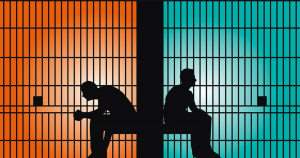 On March 11, 2020, the World Health Organization (“WHO”) first declared SARS-CoV-2 (“COVID-19”) a global pandemic. More than sixteen months later, humanity has much to be proud of, yet there is much more to be desired. Humanity has been subjected to an unprecedented social experiment and the results are as beautiful as they are frightening. A real-life prisoner’s dilemma has pitted the productive capacity of the world’s nations against one another handicapping global cooperation and causing inequities in what ought to be considered a global good: vaccines that could limit the spread of a devastating new disease. In social science, a “prisoner’s dilemma” is a situation in which individual decision-makers always have an incentive to choose in a way that creates a less than optimal outcome for the individuals as a group. In this classic game theory case, the police have arrested two suspects and are interrogating them in separate rooms. Each can choose to either improve his own individual situation by confessing and implicating the other or both can keep silent thereby cooperating and coming to a mutually beneficial solution.
On March 11, 2020, the World Health Organization (“WHO”) first declared SARS-CoV-2 (“COVID-19”) a global pandemic. More than sixteen months later, humanity has much to be proud of, yet there is much more to be desired. Humanity has been subjected to an unprecedented social experiment and the results are as beautiful as they are frightening. A real-life prisoner’s dilemma has pitted the productive capacity of the world’s nations against one another handicapping global cooperation and causing inequities in what ought to be considered a global good: vaccines that could limit the spread of a devastating new disease. In social science, a “prisoner’s dilemma” is a situation in which individual decision-makers always have an incentive to choose in a way that creates a less than optimal outcome for the individuals as a group. In this classic game theory case, the police have arrested two suspects and are interrogating them in separate rooms. Each can choose to either improve his own individual situation by confessing and implicating the other or both can keep silent thereby cooperating and coming to a mutually beneficial solution.
The WHO’s declaration was the catalyst for what would become the largest vaccine race in human history as the nations of the world scrambled to find a solution to combat the novel pathogen. Out of the ensuing chaos, the COVAX facility was born. In many ways, COVAX had aimed to solve the real-life prisoner’s dilemma playing out as governments hurried to pre-order scarce supplies of vaccines and enacted export controls on limited supplies of vaccine precursor ingredients. COVAX is the vaccines pillar of the Access to COVID-19 Tools Accelerator (“ACT”), a global collaboration which aims to accelerate the development, production, and equitable access to COVID-19 tests, treatments, and vaccines. In essence, the idea behind COVAX is relatively simple: nations financially contribute to the procurement program thereby allowing nations to collectively pool their limited financial resources and hedge risk among multiple vaccine candidates in the event some of the vaccines in development did not work out. As originally designed, the pooled procurement of financial resources would give the program the “financial muscle to drive down prices for all participants.”
The program was designed to allow high income nations to self-finance vaccine orders for their populations by paying upfront no later than mid-September 2020. Lower income countries, on the other hand, would have their orders financed by donor grants and the poorest 92 countries would receive vaccines at no cost. These two separate financing streams would allow the program to invest in a wide range of vaccine candidates that would otherwise struggle in coming to market. Co-managed by four separate international organizations: WHO, Gavi (a Switzerland-based public-private partnership created in 2000 and entirely focused on vaccine supply and procurement), The Coalition for Epidemic Preparedness Innovations (CEPI), and UNICEF (as a delivery partner).
As is often the case in matters of international relations, this beautiful milestone of international human cooperation was short-lived. While many high-income countries continue to participate in COVAX, domestic political considerations in the Global North ultimately prevailed. Pressured by their domestic populations and desperate to secure supplies as quickly as possible, high income countries entered into a series of bilateral agreements with vaccine manufacturers. These bilateral deals allow richer countries to offer more for scant supplies and the head of the World Trade Organization Ngozi Okonjo-Iweala has publicly condemned this activity as bidding away vaccines and causing COVAX to struggle in delivering vaccines. Thus, wealthier countries have been able to procure large quantities of vaccine doses in excess of their populations which has allowed manufacturers to prioritize them at the front of the queue. COVAX, unable to compete with these bilateral deals, has been placed at the back of the queue. To put the problem into perspective, consider this: as of late February 2021, the 54 wealthiest countries which are home to just 18% of the world’s population had ordered 40% of the available supply of vaccines. Additionally, rich countries have stockpiled 1 billion more vaccines than their populations need.
Observers have pointed to certain structural issues within COVAX as undermining its aim to provide lower- and middle-income countries with equitable access to vaccines. These critics blame the creation of a second category of purchasing options for self-financing countries called the Optional Purchase Agreement as contributing to the problems outlined above. Rather than allowing COVAX to decide on the types of vaccines and volume of doses that would be allocated to each country, this option allowed buyers the ability to opt in or out of certain products effectively allowing richer countries to pick and choose which vaccines they would get. Another concession allowed richer countries to increase the volume of vaccines they were permitted to purchase from 20% to 50% of their populations.
 Despite these setbacks, COVAX has already approved seven vaccines for distribution to participant countries and is still on track to deliver 2 billion vaccines by the end of 2021. On February 24, 2021, Ghana became the first country in the world to receive shots under COVAX with a delivery of 500,000 doses. The organization has also aimed to address supply shortages caused both by export restrictions imposed by U.S. and Indian manufacturers and supply chain bottlenecks by matching vaccine makers with suppliers of key inputs and help suppliers allocate unused materials. This past year and a half, overcoming the pandemic has seemed analogous to humanity navigating choppy, uncharted seas. The ship we have built, COVAX has got lost more than once with no land in sight. However, recent developments give hope that perhaps there is a shining light house with land just on the horizon and our crew (the human family) are very close to setting foot upon it.
Despite these setbacks, COVAX has already approved seven vaccines for distribution to participant countries and is still on track to deliver 2 billion vaccines by the end of 2021. On February 24, 2021, Ghana became the first country in the world to receive shots under COVAX with a delivery of 500,000 doses. The organization has also aimed to address supply shortages caused both by export restrictions imposed by U.S. and Indian manufacturers and supply chain bottlenecks by matching vaccine makers with suppliers of key inputs and help suppliers allocate unused materials. This past year and a half, overcoming the pandemic has seemed analogous to humanity navigating choppy, uncharted seas. The ship we have built, COVAX has got lost more than once with no land in sight. However, recent developments give hope that perhaps there is a shining light house with land just on the horizon and our crew (the human family) are very close to setting foot upon it.



 On March 11, 2020, the World Health Organization (“WHO”) first declared SARS-CoV-2 (“COVID-19”) a global pandemic. More than sixteen months later, humanity has much to be proud of, yet there is much more to be desired. Humanity has been subjected to an unprecedented social experiment and the results are as beautiful as they are frightening. A real-life prisoner’s dilemma has pitted the productive capacity of the world’s nations against one another handicapping global cooperation and causing inequities in what ought to be considered a global good: vaccines that could limit the spread of a devastating new disease. In social science, a “prisoner’s dilemma” is a situation in which individual decision-makers always have an incentive to choose in a way that creates a less than optimal outcome for the individuals as a group. In this classic game theory case, the police have arrested two suspects and are interrogating them in separate rooms. Each can choose to either improve his own individual situation by confessing and implicating the other or both can keep silent thereby cooperating and coming to a mutually beneficial solution.
On March 11, 2020, the World Health Organization (“WHO”) first declared SARS-CoV-2 (“COVID-19”) a global pandemic. More than sixteen months later, humanity has much to be proud of, yet there is much more to be desired. Humanity has been subjected to an unprecedented social experiment and the results are as beautiful as they are frightening. A real-life prisoner’s dilemma has pitted the productive capacity of the world’s nations against one another handicapping global cooperation and causing inequities in what ought to be considered a global good: vaccines that could limit the spread of a devastating new disease. In social science, a “prisoner’s dilemma” is a situation in which individual decision-makers always have an incentive to choose in a way that creates a less than optimal outcome for the individuals as a group. In this classic game theory case, the police have arrested two suspects and are interrogating them in separate rooms. Each can choose to either improve his own individual situation by confessing and implicating the other or both can keep silent thereby cooperating and coming to a mutually beneficial solution.
 Despite these setbacks, COVAX has already approved seven vaccines for distribution to participant countries and is still on track to deliver 2 billion vaccines by the end of 2021. On February 24, 2021, Ghana became the first country in the world to receive shots under COVAX with a delivery of 500,000 doses. The organization has also aimed to address supply shortages caused both by export restrictions imposed by U.S. and Indian manufacturers and supply chain bottlenecks by matching vaccine makers with suppliers of key inputs and help suppliers allocate unused materials. This past year and a half, overcoming the pandemic has seemed analogous to humanity navigating choppy, uncharted seas. The ship we have built, COVAX has got lost more than once with no land in sight. However, recent developments give hope that perhaps there is a shining light house with land just on the horizon and our crew (the human family) are very close to setting foot upon it.
Despite these setbacks, COVAX has already approved seven vaccines for distribution to participant countries and is still on track to deliver 2 billion vaccines by the end of 2021. On February 24, 2021, Ghana became the first country in the world to receive shots under COVAX with a delivery of 500,000 doses. The organization has also aimed to address supply shortages caused both by export restrictions imposed by U.S. and Indian manufacturers and supply chain bottlenecks by matching vaccine makers with suppliers of key inputs and help suppliers allocate unused materials. This past year and a half, overcoming the pandemic has seemed analogous to humanity navigating choppy, uncharted seas. The ship we have built, COVAX has got lost more than once with no land in sight. However, recent developments give hope that perhaps there is a shining light house with land just on the horizon and our crew (the human family) are very close to setting foot upon it.